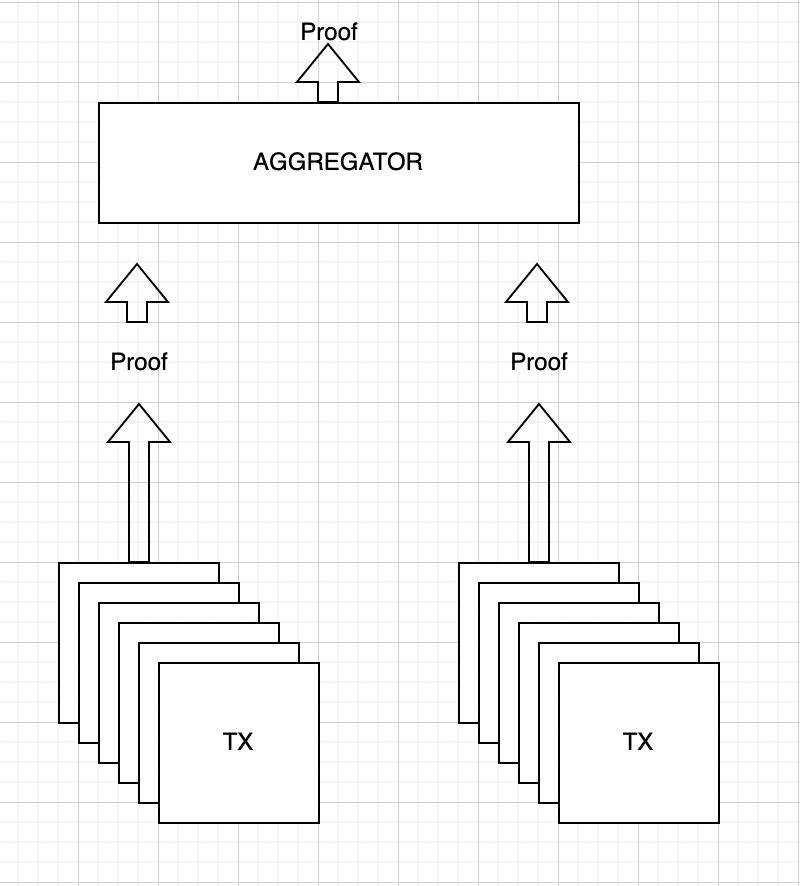Fixed sized blockchain
Recently I came across “Mira Protocol” and found it technically interesting. It promises a “Fixed sized blockchain”. How it defines a blockchain is as follows :
- An unambiguous usable representation (ie. not merely hashes) of the parts of the state a typical user would care about namely the current balance of their account.
- The data that a node needs to verify that this state is real in a trustless manner.
- The ability to broadcast transactions on the network to make a transfer.
From: https://minaprotocol.com/blog/22kb-sized-blockchain-a-technical-reference Based on the above definition of blockchain, Mina claims to have a “fixed sized blockchain” that will never exceed 22KB in size.
The main magic is because of two pieces ( in order of magic potion strength :) )
Recursive zk-SNARKs + Proof-of-Stake
In this article, we will try to understand “zk-SNARKS & Recursive property” and how it is helping Mina.
A quick primer for zk-snark
“Zero-Knowledge Succinct Non-Interactive Argument of Knowledge”.
zk = Zero Knowledge
There is a paper by Alibaba explaining Zero-knowledge proofs https://pages.cs.wisc.edu/~mkowalcz/628.pdf, but basically, a prover has secret X and the goal is to prove to the verifier that it knows the secret without relieving the secret
s = Succinct
The size of the proof is very small and should get verified in milliseconds.
n = Non-Interactive
Zero-knowledge proofs are generally interactive, a verifier must ask “questions”. In zk-Snarks, they must be “non-interactive” i.e. there should be minimal interaction between the prover and the verifier.
ark = Argument of knowledge
It means that a bad prover has low chances of successfully cheating the system without actually knowing. It should be “computationally sound”.
So in short for a zero-knowledge protocol to be SNARK, it should be quickly verifiable/non-interactive with low chances of cheating.
The workflow can be described in the following 4 steps :
- The computational problem to be proved is transformed into arithmetic circuits.
- The arithmetic circuits are converted to a rank-1 constraint system
- R1CS ( rank-1 constraint system ) is converted to QAP ( Not solvable in polynomial time, can be verified in polynomial time )
- The implementation of the zkSNARK algorithm based on QAP
We will quickly try to cover the steps using nodejs, for the sake of the article let us assume we need to build a system that proves to witness that we’re able to factor an integer “x”. We will be using two nodejs libraries circom and snarkjs.
Let us first create our circuit file
vim SecretMultiplier.circom
|
|
which can be compiled using circom
circom SecretMultiplier.circom –r1cs –wasm –sym
This will provide us with the R1CS ( rank-1 constraint system ) output for the circuit. We can now use this file to “set up” Snark.
snarkjs setup -r SecretMultiplier.r1cs
SnarkJS will generate “proving and verification” keys ( proving_key.json & verification_key.json ).
Now imagine that we want to prove that we can factor 33. We need to prove that we know two numbers a and b that multiply to give 33.
Since the only two (non-trivial) numbers that multiply to give 33 are 3 and 11, let’s create a file named input.json, with the following content:
{“a”: 3, “b”: 11}
Now, run the following command to calculate the witness ( witness.json ) :
snarkjs calculatewitness –wasm SecretMultiplier.wasm –input input.json
Now that we’ve generated the witness, we’re ready to create the proof. To create the proof, run:
snarkjs proof –witness witness.json –provingkey proving_key.json
This will generate proof.json ( which contains the actual proof ) & public.json ( which contains the values of the public inputs and outputs – example 33 ). Finally to verify a proof we can run
snarkjs verify –verificationkey verification_key.json –proof proof.json –public public.json
Hence we can see it is possible to prove, to a verifier, that prover knows the secret without relieving the secret.
What is a recursive ZK-SNARK?
A recursive SNARK system generates proofs for different transactions and aggregates them into one single proof, which means one SNARK can verify other SNARKs.
*Microsoft also released an implementation in Rust for Recursive zk-Snarks https://github.com/microsoft/Nova.

Recursive
Mira uses these recursive snarks to keep the blockchain`s size fixed. This means that the blockchain is represented with “verifiable” cryptographic proof (zk-SNARK). This proof is much smaller than most other blockchains and represents the state of the whole chain, rather than the latest block. It enables any node/user to verify any transaction without depending on any third party or running a full node. It is possible to verify any transaction using a simple mobile app with fixed data of under 22KB.
